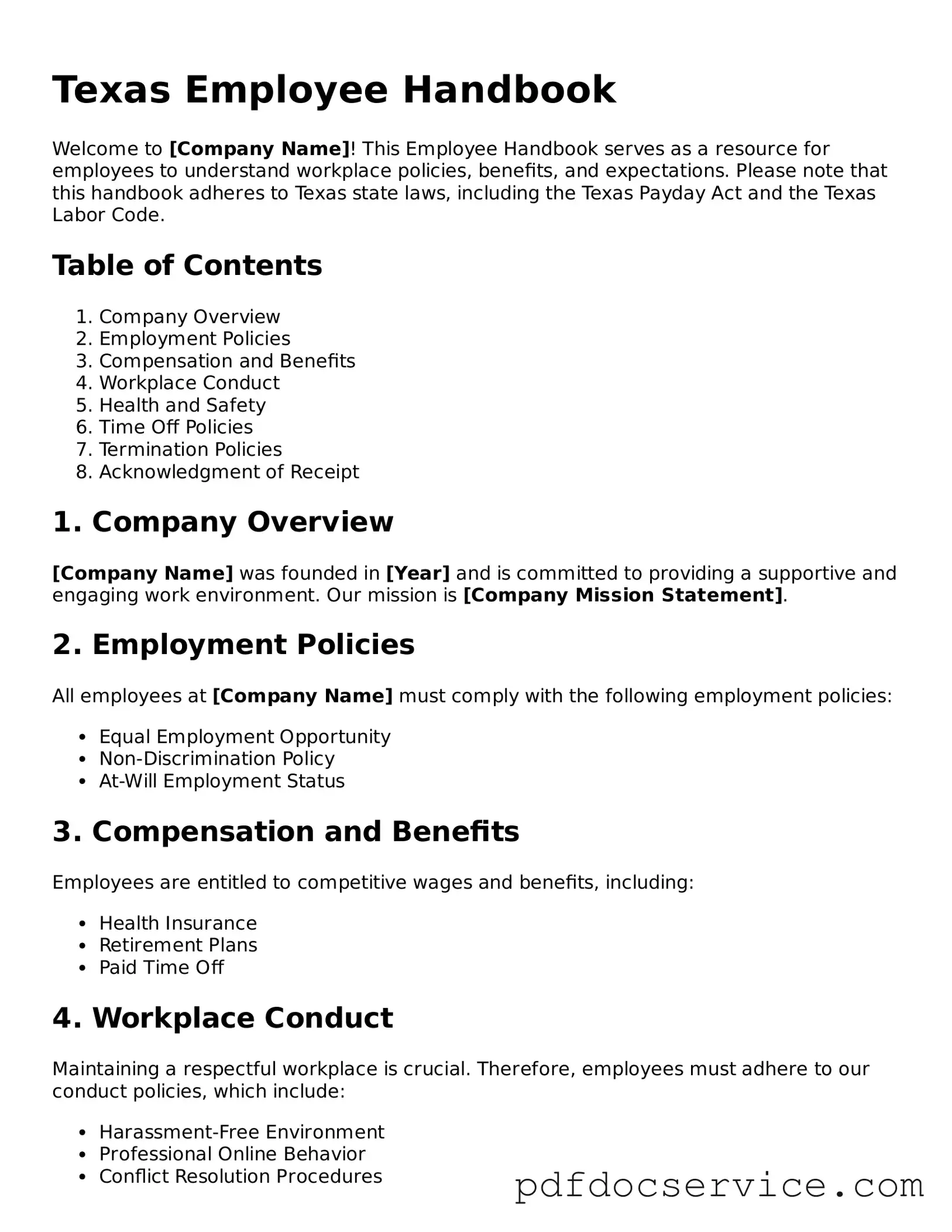Printable Employee Handbook Template for Texas
The Texas Employee Handbook form serves as a crucial document that outlines the policies, procedures, and expectations within a workplace. This form not only informs employees about their rights and responsibilities but also helps employers maintain consistency and compliance with state laws. Understanding its importance is essential for both employers and employees to foster a positive work environment.
Open Employee Handbook Editor
